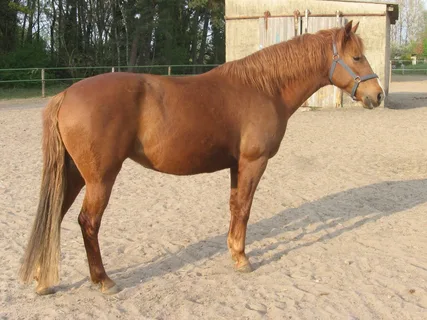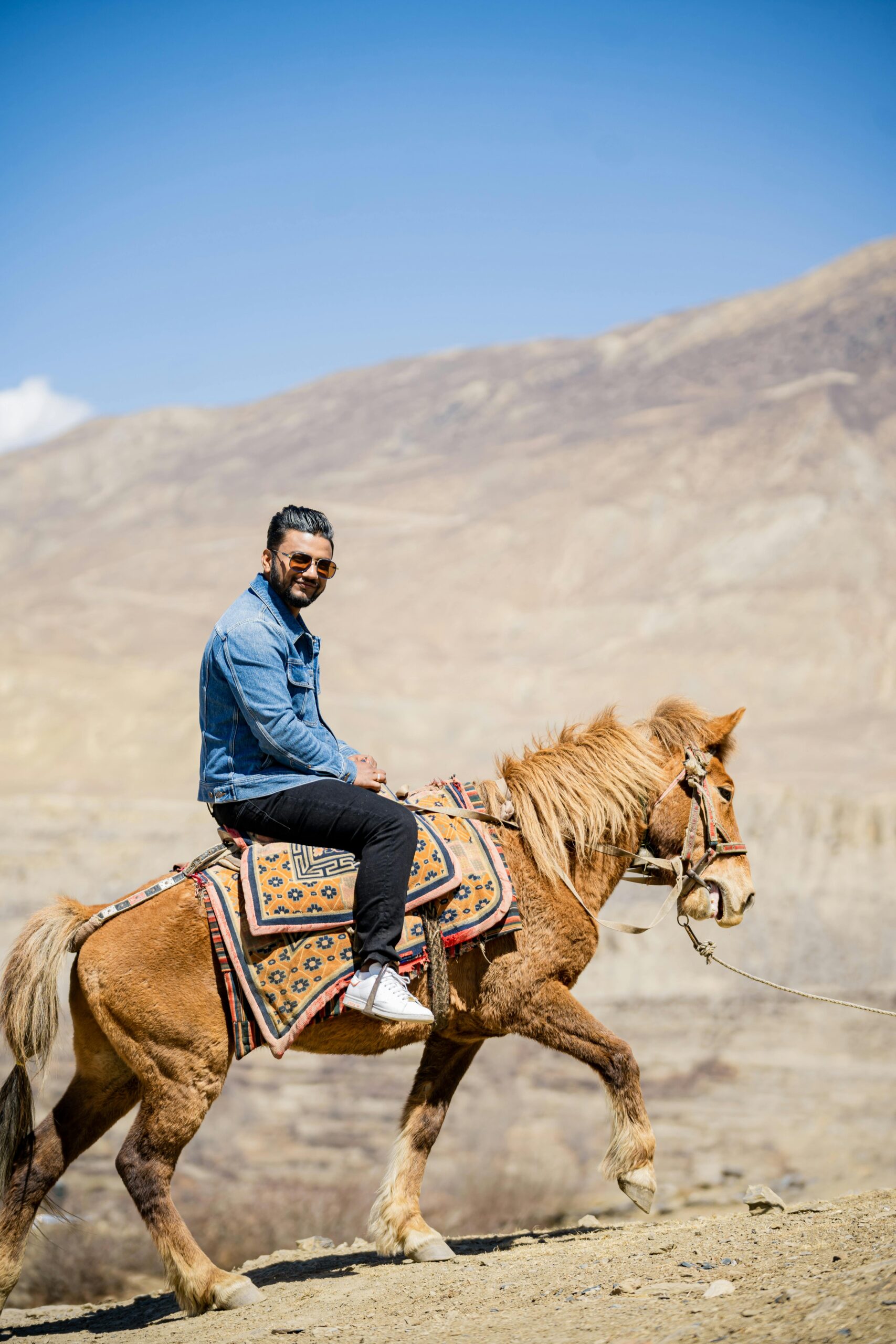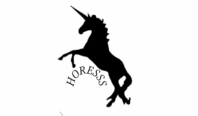Introduction
Brief Overview of the Arabian Barb Horse
The Bedouin Thorn horse is a mixture breed that consolidates the characteristics of the Middle Eastern pony and the Point horse. This breed is praised for its mix of the Bedouin’s speed and refinement with the Thorn’s toughness and versatility. Its unmistakable qualities incorporate a smooth yet solid form, high perseverance, and a flexible disposition reasonable for different equestrian disciplines.
Importance of the Breed in Equestrian History and Culture
By and large, the Bedouin Point horse has been essential to the way of life of North Africa and the Middle Eastern Landmass. It has been used for transportation, military purposes, and as an image of status and distinction. Its job in perseverance dashing and conventional occasions has solidified its significance in equestrian history, while its hereditary commitments have affected numerous cutting edge horse breeds.
Purpose of the Outline: To Explore the Heritage and Performance of the Arabian Barb Horse
This framework is intended to dig into the rich legacy and execution ascribes of the Middle Eastern Point horse. It will cover the variety’s authentic roots, physical and fickle attributes, its effect on different equestrian disciplines, and continuous endeavors to save its heritage. The objective is to give a thorough comprehension of the variety’s importance and flexibility in the equestrian world.
Historical Background
Origins and Development of the Arabian and Barb Horse Breeds
Arabian Horse:
Starting in the Middle Eastern Landmass, the Bedouin horse is one of the most seasoned and most powerful pony breeds ever. Prestigious for its perseverance, speed, and excellence, the variety has been valued by Bedouin clans for millennia. Its improvement was impacted by the brutal desert climate, prompting a pony that is very much adjusted to outrageous circumstances and prepared to do really long travel.
Origins and History
Origins:The Middle Eastern pony is one of the most established horse breeds, beginning from the Bedouin Promontory. It has been reproduced for millennia by Bedouin clans who esteemed its perseverance, speed, and versatility.
Verifiable Importance: The variety plays had a pivotal impact in the improvement of other pony breeds and has been an image of respectability and beauty since forever ago. It has fundamentally impacted numerous cutting edge breeds, adding to their perseverance and execution qualities.
2. Physical Characteristics
Size: Middle Eastern ponies normally stand between 14.1 to 15.1 hands high. They have a conservative and strong form.
Coat Tones: Normal tones incorporate straight, chestnut, dim, and dark. Their jacket is fine and luxurious.
Compliance: Unmistakable elements incorporate an enormous, wide brow, huge eyes, and a refined gag. They have a high-set, curving neck, profound chest, short back, and long, solid legs.
3. Temperament and Traits
Intelligence: Arabians are known for their knowledge and responsiveness, which makes them simple to prepare and speedy students.
Perseverance: The variety succeeds in perseverance because of its endurance, making it appropriate for significant distance riding and hustling.
Adaptability: Bedouin ponies are flexible and can perform well in different disciplines, including dressage, show hopping, and western riding.
4. Influence on Other Breeds
Genetic Contributions: The Bedouin horse has added to the advancement of various different varieties, like Pure bloods, Warmbloods, and Quarter Ponies. Its qualities have added speed, perseverance, and class to these varieties.
5. Cultural and Historical Significance
Cultural Symbol: The Bedouin horse is an image of excellence, effortlessness, and perseverance in Middle Eastern culture. It has been essential to the set of experiences and customs of the Bedouin Landmass, utilized for movement, exchange, and fighting.
Authentic Job: By and large, Middle Eastern ponies were valued for their capacity to cross significant distances and their part in different social and military settings.

6. Conservation and Modern Breeding
Conservation Efforts: Endeavors are made to protect the variety’s hereditary variety and maintain conventional reproducing rehearses. This incorporates overseeing rearing projects and supporting associations devoted to the variety.
Present day Reproducing: Bedouin ponies are effectively reared for cutthroat equestrian games and show purposes. Their characteristics keep on being pursued in reproducing projects to upgrade other pony breeds.
7. Popularity and Uses
Competitive Sports:Arabians are well known in perseverance dashing, where their endurance and speed are profoundly esteemed. They are likewise utilized in dressage, show hopping, and other equestrian disciplines.
Reproducing: The variety is valued for its magnificence and execution characteristics, pursuing it a famous decision for upgrading the characteristics of other pony breeds through crossbreeding.
The Bedouin horse stays one of the most renowned and compelling varieties all around the world, known for its exhibition, authentic importance, and particular excellence.
- Barb Horse:
- The Barb horse traces its origins to North Africa, specifically the Berber tribes of the Maghreb region. Known for its robustness and stamina, the Barb was bred to withstand the rugged terrain and climate of the region. It has historically been used for cavalry and as a general-purpose workhorse. The Barb horse is also noted for its contribution to other breeds through its durability and versatility.
B. The Historical Significance of the Arabian Barb Horse in North Africa and the Arabian Peninsula
In North Africa:The Middle Eastern Spike horse was profoundly esteemed for its capacity to perform under the difficult states of North Africa. It assumed an essential part in neighborhood equestrian practices, including hustling and military commitment. The variety’s perseverance and flexibility went with it an inclined toward decision among the Berber and other North African societies.
In the Middle Eastern Promontory:The Middle Eastern Spike horse additionally held importance in the Bedouin Landmass, where it mixed the refined characteristics of the Middle Eastern with the rough attributes of the Point. This cross breed was valued for its capacity to perform well in different equestrian exercises, from extremely long travel to battle circumstances. The variety’s presence built up the authentic associations between the Middle Eastern Landmass and North Africa.
C. The Role of Crossbreeding in Creating the Arabian Barb Horse
Development of the Crossbreed:
The crossbreeding between the Bedouin and Point ponies intended to consolidate the qualities of the two varieties. The Middle Eastern’s speed, endurance, and polish were converged with the Spike’s toughness, solidness, and versatility. This conscious rearing practice brought about a pony that epitomized the most desirable characteristics of both parent breeds, prompting the making of the Bedouin Thorn horse.
Impact on Breeding Practices:
The production of the Middle Eastern Thorn horse impacted rearing practices in both North Africa and the Bedouin Promontory. It showed the advantages of consolidating different hereditary characteristics to create a flexible and high-performing horse. The Bedouin Thorn’s improvement added to a more extensive comprehension of crossbreeding in equine hereditary qualities and set a trend for future half and half varieties.
Physical Characteristics and Temperament
A. Key Physical Traits: Size, Coat Colors, and Conformation
Size:
The Bedouin Point horse normally remains between 14.1 to 15.3 hands high, finding some kind of harmony between the Middle Eastern’s refined height and the Thorn’s more powerful form. This size range adds to its deftness and perseverance, making it appropriate for different equestrian disciplines.
Coat Tones:
The variety displays an extensive variety of coat tones, including inlet, chestnut, dim, and dark. The variety in coat tones mirrors the hereditary impacts of both parent breeds. The coat is by and large short and thick, giving security against unforgiving natural circumstances.
Compliance:
The Bedouin Point horse includes a mix of the Middle Eastern’s rich, refined compliance and the Thorn’s solid, utilitarian form. It has a proportional body with a profound chest, solid rump, and an effortless, curved neck. The variety normally has a refined head with expressive eyes and enormous nostrils, supplemented by strong legs and distinct joints.

B. Comparison of Characteristics Inherited from Arabian and Barb Ancestors
From the Arabian Horse:
Grace and Speed: The Bedouin contributes a smooth, athletic form and remarkable speed. Its impact is clear in the Bedouin Thorn’s deft development and refined appearance.
Refined Elements: The variety acquires the Bedouin’s unmistakable head shape, including a high temple, enormous eyes, and a smooth, refined neck.
From the Point Pony:
Toughness and Endurance: The Spike’s powerful form and perseverance are unmistakable in the Bedouin Thorn horse. It has a more solid and versatile edge, reasonable for really long travel and requesting conditions.
Versatility: The Spike’s impact is found in the variety’s capacity to adjust to different environments and territories, mirroring its beginnings in the rough scenes of North Africa.
C. Temperament: Intelligence, Endurance, and Versatility
Intelligence:
The Middle Eastern Thorn horse is known for its high knowledge and teachability. It shows areas of strength for a to learn and answer orders, making it a flexible friend in different equestrian disciplines.
Endurance:
Consolidating the perseverance of the Thorn with the endurance of the Bedouin, the Middle Eastern Spike horse succeeds in significant distance exercises. Its actual versatility and mental grit permit it to perform well in perseverance races and other requesting occasions.
Versatility:
The variety’s flexibility is a key quality, as it is fit for succeeding in numerous equestrian disciplines, including perseverance riding, dressage, and show hopping. Its versatile nature makes it reasonable for a scope of exercises, from serious games to sporting riding.
Role in Equestrian Disciplines
A. Endurance Racing: The Breed’s Natural Stamina and Resilience
Stamina and Performance:
The Middle Eastern Point horse is especially eminent for its endurance, a characteristic acquired from both the Bedouin and Spike breeds. Its capacity to keep up with speed and energy over significant distances makes it a champion entertainer in perseverance dashing.
Training and Success:
With appropriate preparation, the Middle Eastern Spike succeeds in perseverance races, exhibiting its flexibility and capacity to explore testing territories. Its physical and mental perseverance, joined with a characteristic liking for really long travel, pursues it an inclined toward decision for perseverance occasions.
Historical Context:
With legitimate preparation, the Bedouin Spike succeeds in perseverance races, exhibiting its versatility and capacity to explore testing landscapes. Its physical and mental perseverance, joined with a characteristic liking for really long travel, pursues it an inclined toward decision for perseverance occasions.
B. Show Jumping and Dressage: Agility and Elegance in Performance
Show Jumping:
In show hopping, the Middle Eastern Point pony’s dexterity and physicality come to the front. Its capacity to address roadblocks with elegance and accuracy is improved by its refined adaptation and responsive preparation. The variety’s speedy reflexes and solid rump add to its outcome in cutthroat bouncing occasions.
Dressage:
The variety’s style and responsiveness make it appropriate for dressage, where exact developments and liquid changes are critical. The Bedouin Thorn’s refined appearance, joined with its keen disposition, permits it to succeed in executing complex dressage schedules with effortlessness and precision.
Execution Characteristics:
The mix of speed, dexterity, and class acquired from its parent breeds prepares the Middle Eastern Spike to perform extraordinarily well in both show bouncing and dressage, exhibiting its flexibility and expertise in these disciplines.
C. Use in Traditional and Modern Equestrian Sports
Traditional Equestrian Sports:
In conventional games, for example, neighborhood races and stately occasions, the Bedouin Spike has been esteemed for its presentation and adaptability. Its verifiable job in rangers and as a functioning pony highlights its importance in different conventional equestrian practices.
Modern Equestrian Sports:
Today, the Middle Eastern Spike is effectively engaged with a scope of present day equestrian disciplines, including eventing, polo, and consolidated driving. Its flexibility and superior execution in these games feature the variety’s proceeded with significance and adaptability in the equestrian world.
Competitive Edge:
The Middle Eastern Thorn’s outcome in both conventional and contemporary games is a demonstration of its persevering through characteristics and flexibility. Its capacity to perform across various disciplines shows the variety’s extensive range of abilities and its worth to current equestrians.
Cultural and Historical Significance
A. The Arabian Barb Horse in Traditional Lifestyles and Warfare
Traditional Lifestyles:In North African and Bedouin societies, the Middle Eastern Spike horse has been vital to day to day existence and customary practices. Its perseverance and dependability made it a vital resource for migrant clans, working with really long travel and exchange. The variety’s adaptability was likewise fundamental for different types of conventional work, including grouping and farming.
Fighting:The Bedouin Spike horse assumed a huge part in verifiable fighting, especially in mounted force units. Its solidarity, endurance, and spryness made it appropriate for the fight to come, where speed and mobility were essential. The variety’s capacity to endure brutal circumstances and perform under pressure added to its regarded status in military history.
B. Symbolism and Representation in Art and Literature
Art:In North African and Bedouin societies, the Middle Eastern Spike horse has been vital to day to day existence and conventional practices. Its perseverance and unwavering quality made it a critical resource for migrant clans, working with extremely long travel and exchange. The variety’s flexibility was likewise fundamental for different types of customary work, including grouping and agribusiness.
Fighting:The Bedouin Spike horse assumed a huge part in verifiable fighting, especially in rangers units. Its solidarity, endurance, and dexterity made it appropriate for the fight to come, where speed and mobility were critical. The variety’s capacity to endure unforgiving circumstances and perform under pressure added to its regarded status in military history.
C. The Breed’s Influence on Global Horse Breeding and Equestrian Culture
Global Horse Breeding:
The Middle Eastern Thorn has essentially impacted the advancement of different present day horse breeds through its hereditary commitments. Its qualities of perseverance, deftness, and flexibility have been integrated into reproducing programs around the world, improving the exhibition and adaptability of numerous contemporary equine varieties.
Equestrian Culture:
The variety’s effect on equestrian culture stretches out to both conventional and serious disciplines. Its heritage is reflected in the proceeded with notoriety of perseverance dashing, show bouncing, and other equestrian games where the Bedouin Point’s characteristics are commended. The variety’s impact is obvious in the practices and principles of worldwide equestrian networks.
Preservation and Legacy:
Endeavors to protect the Middle Eastern Spike horse and its remarkable qualities add to keeping up with its social and authentic heritage. Rearing projects, comprehensive developments, and instructive drives expect to respect and support the variety’s legacy, guaranteeing its proceeded with presence in the equestrian world.
The Middle Eastern Thorn pony’s well established importance in customary ways of life, its portrayal in workmanship and writing, and its expansive effect on worldwide equestrian culture feature its persevering through heritage and social significance.
Conservation and Breeding Efforts
A. Challenges in Preserving the Arabian Barb Horse’s Genetic Heritage
Genetic Diversity:
One of the primary difficulties in protecting the Bedouin Spike pony’s hereditary legacy is keeping up with hereditary variety. As a mixture breed, the populace is somewhat little, and saving a large number of hereditary qualities is urgent to keep away from inbreeding and guarantee the variety’s drawn out reasonability.
Declining Numbers:
The Bedouin Thorn horse faces the gamble of declining numbers because of current rearing practices, changes in equestrian games, and moving farming necessities. The variety’s generally specialty status can prompt decreased interest and less assets committed to its conservation.
Cultural and Economic Factors:
Monetary imperatives and changes in social practices might influence the prioritization of preservation endeavors. Conventional purposes of the variety, like in neighborhood rangers or farming, have decreased, which can affect financing and backing for preservation drives.
B. Current Breeding Programs and Conservation Initiatives
Breeding Programs:
A few reproducing programs intend to improve and save the Middle Eastern Spike pony’s exceptional qualities. These projects center around keeping up with hereditary variety, working on actual qualities, and guaranteeing that the variety’s legacy is maintained in people in the future. Particular rearing practices help to balance out and reinforce the variety while holding its fundamental characteristics.
Conservation Initiatives:
Protection drives incorporate associations between breed affiliations, equine examination foundations, and preservation associations. These endeavors include observing the variety’s populace, reporting hereditary information, and executing techniques to forestall hereditary disintegration. Protection programs likewise underscore instruction and attention to accumulate support for the variety.
Restoration Projects:
A few ventures center around reestablishing verifiable reproducing rehearses and resuscitating customary purposes of the Bedouin Spike horse. By reconnecting the variety with its verifiable roots and applications, these drives plan to expand its importance and allure in contemporary equestrian settings.
C. The Role of Enthusiasts and Organizations in Promoting the Breed
Breed Associations:
Breed affiliations assume a fundamental part in advancing the Bedouin Point horse by putting together occasions, rivalries, and displays. These associations likewise give assets and backing to reproducers and fans, cultivating a local area committed to the variety’s government assistance and headway.
Equine Enthusiasts:
Fans and proprietors add to the variety’s protection through dynamic cooperation in equestrian games, instructive effort, and support. Their obligation to the variety helps bring issues to light and appreciation, driving interest and backing for preservation endeavors.
Educational and Outreach Programs:
Instructive projects and effort drives intend to illuminate general society about the Bedouin Point pony’s legacy and importance. Studios, courses, and media crusades assist with featuring the variety’s one of a kind characteristics and the significance of its safeguarding, drawing in a more extensive crowd in preservation endeavors.
Endeavors to preserve and advance the Middle Eastern Point horse include tending to hereditary, financial, and social difficulties while utilizing the help of reproducing programs, protection drives, and committed lovers. By cultivating mindfulness and guaranteeing the variety’s proceeded with importance, these endeavors plan to protect the Middle Eastern Spike pony’s heritage for people in the future.

Conclusion
A. Summary of the Arabian Barb Horse’s Unique Heritage and Performance Qualities
Instructive projects and effort drives mean to illuminate the general population about the Middle Eastern Point pony’s legacy and importance. Studios, classes, and media crusades assist with featuring the variety’s extraordinary characteristics and the significance of its protection, drawing in a more extensive crowd in preservation endeavors.
Endeavors to moderate and advance the Bedouin Thorn horse include tending to hereditary, financial, and social difficulties while utilizing the help of rearing projects, protection drives, and committed lovers. By encouraging mindfulness and guaranteeing the variety’s proceeded with pertinence, these endeavors mean to protect the Middle Eastern Spike pony’s heritage for people in the future.
B. The Ongoing Relevance and Potential Future of the Breed in the Equestrian World
Regardless of confronting difficulties, for example, declining numbers and hereditary protection, the Bedouin Point horse stays applicable in the equestrian world because of its presentation characteristics and authentic importance. The variety’s flexibility and expertise in various disciplines guarantee its proceeded with appeal to equestrians and reproducers. Progressing protection endeavors and rearing projects are essential in keeping up with the variety’s hereditary variety and improving its capacities. The possible fate of the Middle Eastern Thorn lies in its capacity to keep affecting present day horse reproducing and equestrian practices while saving its remarkable legacy.
C. Final Thoughts on the Importance of Preserving This Cultural and Equestrian Legacy
Safeguarding the Middle Eastern Thorn horse is fundamental not just for keeping a remarkable and flexible variety yet in addition for regarding its social and verifiable heritage. The variety addresses a mix of customs, execution greatness, and flexibility, contributing essentially to both verifiable and contemporary equestrian practices. By supporting preservation endeavors and advancing mindfulness, we can guarantee that the Middle Eastern Spike horse keeps on flourishing, improving the equestrian world and protecting an important piece of social legacy for people in the future.
Arabian Barb Horse
1. What is the Arabian Barb horse?
The Bedouin Point horse is a half and half variety coming about because of the crossbreeding of the Middle Eastern pony and the Thorn horse. It consolidates the tastefulness and speed of the Middle Eastern with the endurance and versatility of the Thorn, making it appropriate for a scope of equestrian disciplines.
2. What are the key physical characteristics of the Arabian Barb horse?
The Middle Eastern Spike horse commonly remains between 14.1 to 15.3 hands high. It has a mix of conformity qualities from both parent breeds, including a profound chest, solid rump, and an elegant neck. Coat tones fluctuate and can incorporate narrows, chestnut, dim, and dark.
3. How does the Arabian Barb horse perform in equestrian disciplines?
The Bedouin Spike horse succeeds in perseverance dashing because of its normal endurance and flexibility. It is likewise effective in show hopping and dressage, displaying its readiness and tastefulness. The variety is adaptable and performs well in different customary and present day equestrian games.
4. What is the historical significance of the Arabian Barb horse?
By and large, the Bedouin Thorn horse assumed a significant part in the conventional ways of life of North Africa and the Middle Eastern Landmass. It was esteemed for its exhibition in fighting, transportation, and rural undertakings. The variety additionally holds representative significance in workmanship and writing, addressing strength and honorability.
5. What challenges are faced in preserving the Arabian Barb horse?
Challenges incorporate keeping up with hereditary variety, tending to declining numbers, and adjusting to changes in monetary and social practices. Conservation endeavors are important to forestall inbreeding and guarantee the variety’s drawn out practicality.
6. What are current conservation and breeding efforts for the Arabian Barb horse?
Preservation and reproducing endeavors center around keeping up with hereditary variety through specific rearing projects and protection drives. Associations and fans work to report hereditary information, execute protection systems, and resuscitate customary purposes of the variety.
7. How can enthusiasts and organizations support the Arabian Barb horse?
Fans and associations can uphold the variety by taking part in equestrian occasions, joining breed affiliations, advancing mindfulness through instructive projects, and adding to preservation endeavors. Their inclusion supports the variety’s presence and social importance.
8. What is the future outlook for the Arabian Barb horse?
The fate of the Bedouin Thorn horse relies upon proceeded with protection endeavors, the variety’s versatility in current equestrian games, and its capacity to impact worldwide pony rearing. By protecting its legacy and advancing its characteristics, the variety can keep up with its importance and heritage in the equestrian world.
